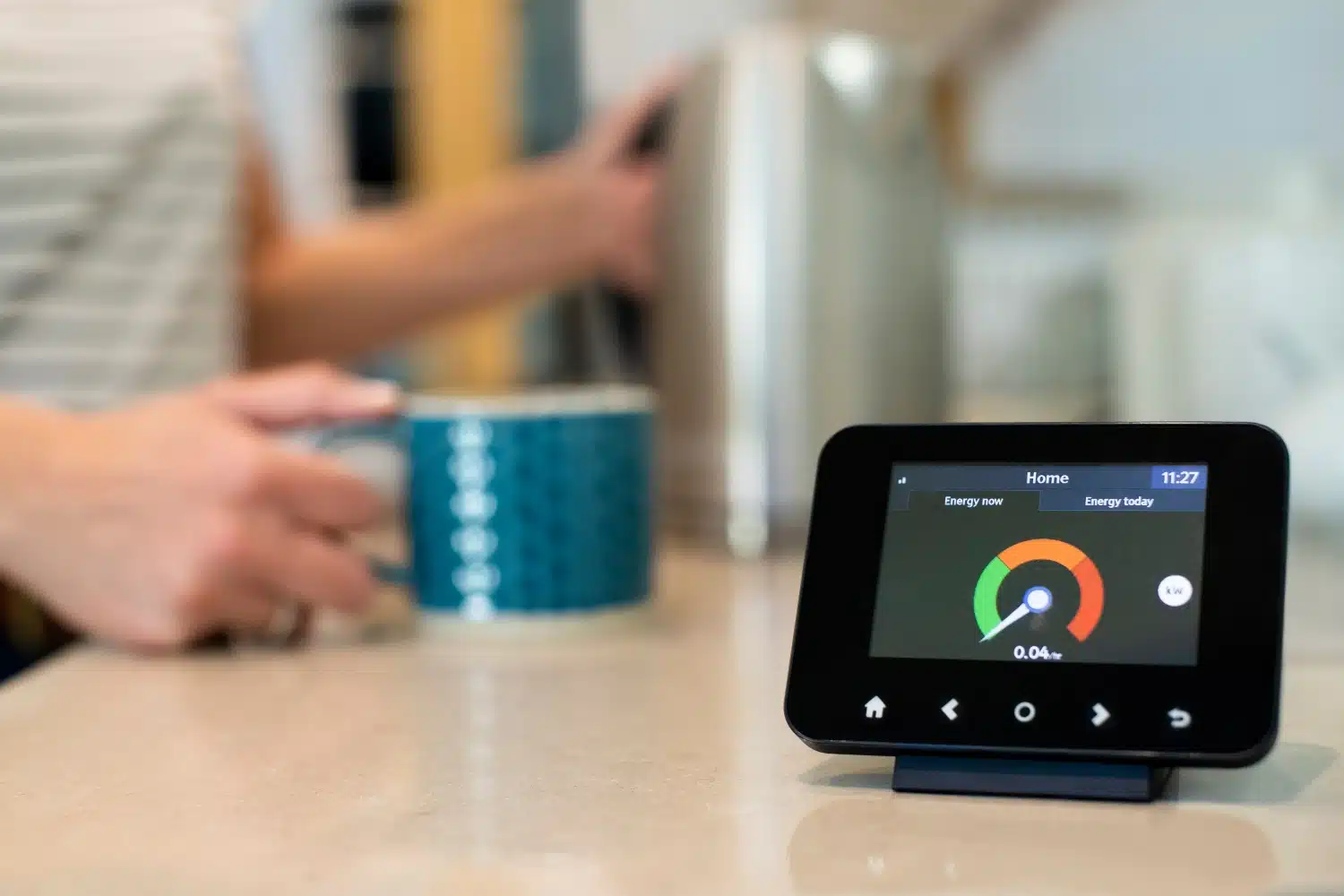
Improve Energy Efficiency in Your Home With These 10 Simple Tips
Remodeling and Renovation Tips
We’ll break it down for you with some quick and simple efficiency-enhancing household tips that will help the environment — and maybe even your bank account.
What Is an Example of Energy Efficiency?
Energy efficiency is the equivalent of reducing energy waste. To put it simply, it means doing the same task with less energy.
Think of all the items in your home that use energy: light bulbs, appliances, air conditioning, water heaters, electronics, and more. When your home uses excess energy to power these items, it not only adds to your utility bill but also causes pollution and harms the environment.
You may not realize it, but you probably have some well-established, energy-indulgent habits that can be adjusted. For example, does your thermostat need to be lowered all the way to 65°F when it’s hot out, or could you bump it up a few degrees? Are those four long baths each week really necessary, or would a couple suffice with some shorter showers in between? Maybe you could scrape your dirty plates in the garbage before they go in the dishwasher to save water. You get where we’re going with this. Small actions can have a big impact, so think about some behavior modifications you’re willing to make.
By making a few easy changes, you can improve air quality, reduce greenhouse gas emissions, and save money. Not sure where to begin? Here are some tips that’ll help you improve energy efficiency in your home in no time.
10 Tips for Improving Your Home's Energy Efficiency
Now that we’ve explained why improving energy efficiency is important, let’s discuss how to make your home energy efficient. Our tips range from making a few simple changes to buying or building an energy-efficient home. No matter where you fall in this range, the important thing to remember is that even the smallest actions can have a big impact.
1. Ask for a Free Energy Audit.
Let’s start by determining your home’s current energy efficiency. This can be done through a home energy audit, which many utility providers offer for free. These assessments examine your house's average energy use and past energy bills. Energy auditors will determine where your energy use is going, so you can eliminate any waste and figure out how to make your home more energy efficient.
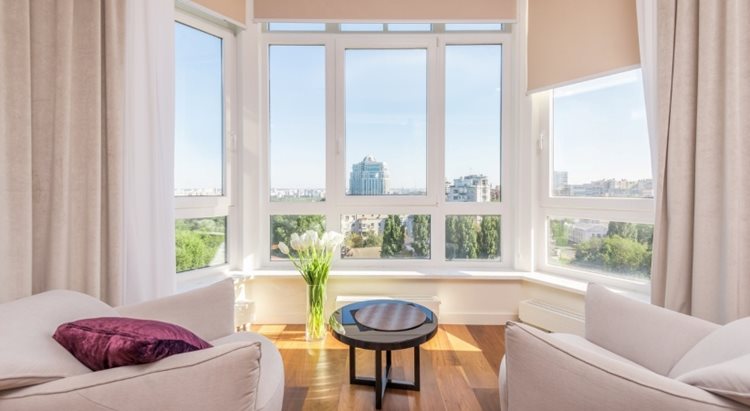
Increase home energy efficiency by using window treatments instead of your thermostat.
(Source: Max Vakhtbovych via Pexels)
2. Make the Most of Natural Shade and Sun.
What wastes the most energy in a house? That award goes to your home’s heating and air conditioning use — and that usage can result in a high utility bill. To help lower your energy costs and improve energy efficiency, set your thermostat to 78°F in the summer and 68°F in the winter.
You don’t have to rely only on your thermostat to keep you comfortable, though. If it’s hot outside, draw your blinds and curtains to block the sun’s rays. Don’t have window coverings yet? Now may be the time to install some floor-length ones (they have the added benefit of making rooms seem larger, too!). Alternatively, when it’s chilly, open those blinds and use that lovely sunshine to warm your home.
If you’re still uncomfortable in your home, think about how you’re dressed. It might be a good
idea to put on an additional layer in the winter and dress down in the summer. It may seem like a minor action, but it will take the heavy lifting off your heating and cooling unit.
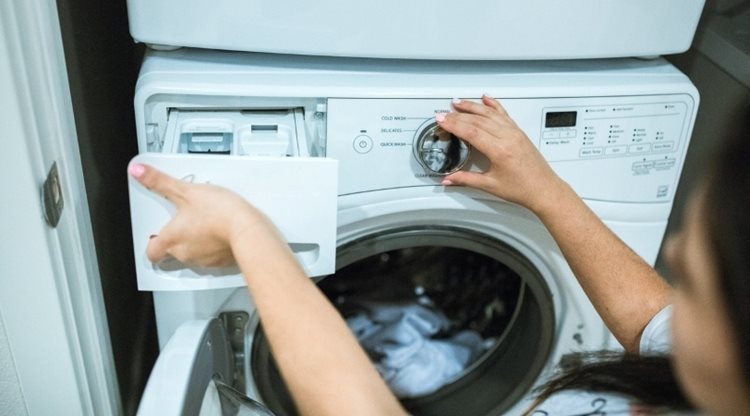
Efficiency-enhancing household tips include using cold water instead of hot or warm.
(Source: RODNAE Productions via Pexels)
3. Use Cold Water When Possible.
If you constantly increase the water temperature in your home, you may be decreasing its energy efficiency. Sure, no one relishes the idea of taking a cold shower (and we’re not saying you have to resort to that), but if you’re using hot or warm water for most of your laundry and dishwashing cycles, you could be burning (no pun intended) more energy than what’s needed. Increasing cold water usage is one of the easiest ways to increase home energy efficiency.
What’s the best way to cut your hot water usage? Try washing your clothing in cold water — especially those items that only need a light refresh and aren’t heavily soiled. As an added bonus, you may notice less color bleeding, fading, and shrinkage of your clothes after switching the water temperature. Also, when meal time is over, ask yourself if all those dishes need to go straight into the dishwasher. There are likely some cleaner items that can be washed by hand instead.
Speaking of water usage, using less hot and warm water is important, but so is looking for ways to reduce overall water consumption. Here are some water-wasting habits you and your family may be doing and ways to combat them.
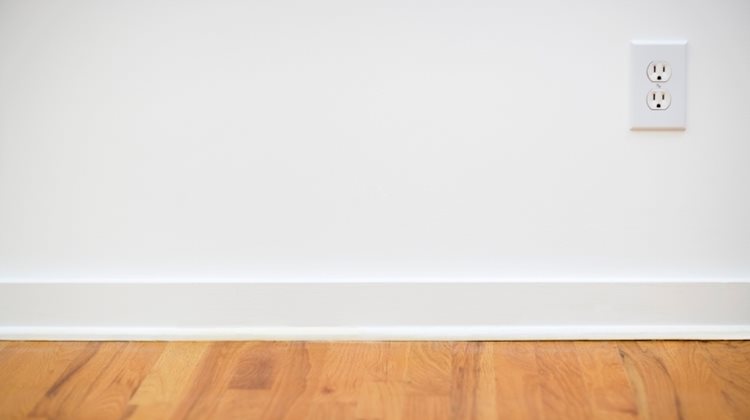
What is a low cost way to make your home more energy efficient? Unplug your appliances!
4. Don’t Forget To Unplug.
This may seem obvious, but electronics play a huge role in your home’s energy usage. Plus, did you know that your electronics keep running even after you turn them off? It’s actually estimated that 75 percent of the energy used to power household electronics is consumed when they are switched off. This sneaky energy consumption is known as standby power or phantom loads.
Here are some ways you can decrease phantom loads and increase home energy efficiency:
- Unplug the devices to stop the energy currents from flowing.
- Use power strips to disconnect multiple items at once.
- Adjust the power settings on your electronics to control usage. For example, enable power-saving or sleep modes on computers and monitors, and adjust screen brightness settings on TVs and smartphones to reduce energy consumption.
- If possible, consider upgrading to newer, more energy-efficient electronics, as these can help reduce energy consumption over time.
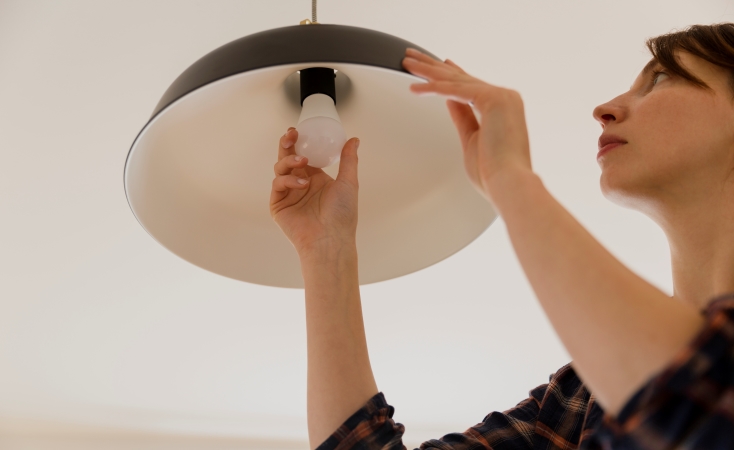
Replace your traditional light bulbs with LED ones.
5. Replace Your Light Bulbs.
The U.S. Department of Energy says replacing five of your home’s most frequently used light bulbs with energy-saving ones could result in a $75-a-year savings in energy costs. Imagine what you would save if you replaced all your bulbs — inside and outside!
If you’re wondering how to make your home more energy efficient through your light bulb selection, opt for LED bulbs versus traditional or CFL (Compact Fluorescent Lamp) models. Light-emitting diode bulbs, otherwise known as LEDs, use less energy and have a longer lifespan than other bulbs. They’re also more durable and less resistant to temperature changes, meaning they’re especially useful in outdoor settings.
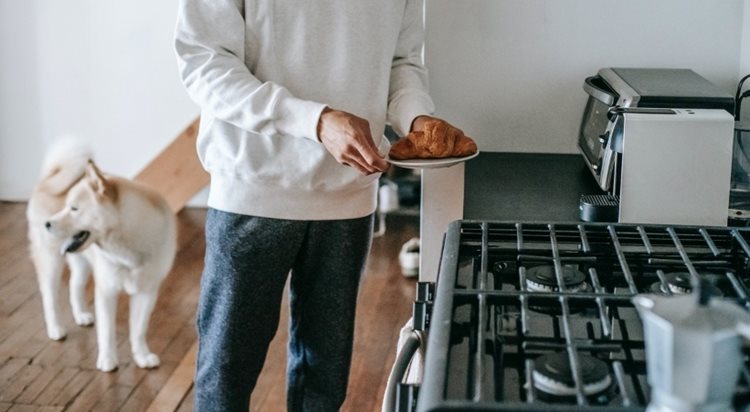
Making a small dish? Use your toaster oven or air fryer instead of an oven to save energy.
(Source: Zen Chung via Pexels)
6. Look for Oven and Stove Alternatives.
If your oven and stove are your go-to cooking appliances, it’s time to consider other options. If you don’t need much space, use your microwave, toaster oven, slow cooker, pressure cooker, or air fryer. They’re quicker and use significantly less energy.
If you have to use your oven, try not to open it while the food is cooking inside. Every time you open the door (even for a peek), the temperature drops, and the oven has to overcompensate to raise the temperature back to the desired degree.
| Pro Tip: To be even more energy-savvy, turn your oven off a few minutes before your food is finished cooking. The temperature won’t drop rapidly, but your oven will spend less time in “cool down” mode. |
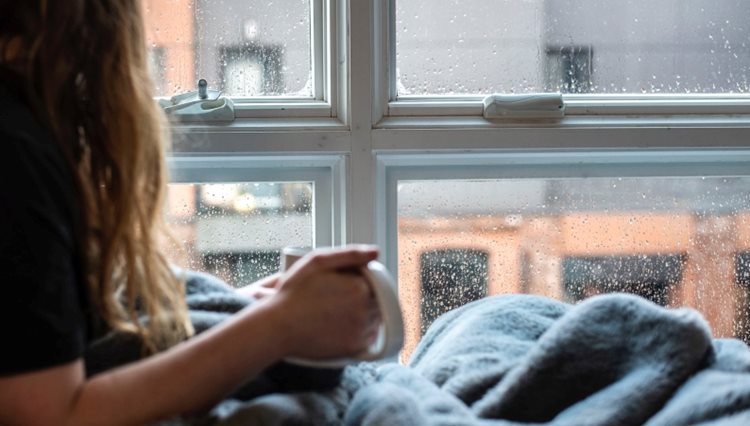
Is your home drafty in the winter and humid in the summer? The problem could be insufficient insulation.
(Source: Amin Hasani via Unsplash)
7. Go From Good to Great When You Insulate.
Make your house more energy efficient by creating a barrier that prevents heat loss in the winter and heat gain in the summer. How can you do this? By ensuring your home has proper insulation.
Did you know that half of your home’s heating and cooling usage (and, therefore, cost) is due to heat gain and loss through windows and walls? Insulating your home and/or investing in triple-paned glass can keep the weather where it belongs — outside your home. Insulation helps maintain a consistent indoor temperature, reducing the need for heating and cooling. This leads to lower energy consumption, decreased utility bills, and a more comfortable living environment year-round.
You can also stop drafts by insulating your doors, attic hatches, outdoor-facing pipes, and ceiling-to-wall joints. Speaking of attic hatches, when was the last time you checked the depth of your attic insulation? Is it the recommended 10–14 inches deep?
| Pro Tip: Although necessary, insulation can create quite a mess. The easiest way to tackle an insulation project may involve moving furniture and other home items out of the way. No worries, though. Portable storage containers are a simple, convenient solution for getting those items out of the way and back in place on your schedule — and without even leaving your property. |
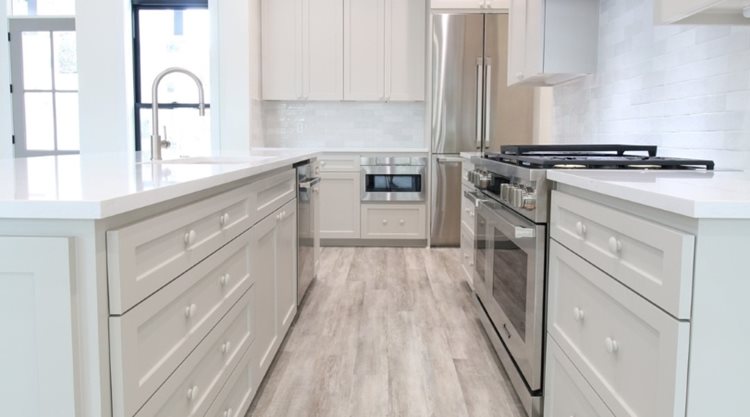
Energy-efficient appliances are designed to consume less energy automatically.
(Source: @youngerhomes via Instagram)
8. Improve Energy Efficiency Through Household Investments.
While you can obviously improve energy efficiency without spending money, there are some larger investments you may want to consider that go beyond energy-efficient windows and insulation. There is also an abundance of energy-efficient appliances, fans, and electronics.
If you’re remodeling your home or in the market for a new washing machine or dishwasher, for instance, ask your retailer if the products you’re interested in are ENERGY STAR certified. This means the products are federally guaranteed to consume less energy than similar makes and models.
It’s important to note that many energy-efficient appliances have a higher price tag, which may seem counterintuitive. However, these are upfront costs that could actually save you money in the long run. The sticker price is only one part of the equation; you must also consider the annual operating costs. Many people shy away from the more expensive appliances, only to pay higher bills in the future.
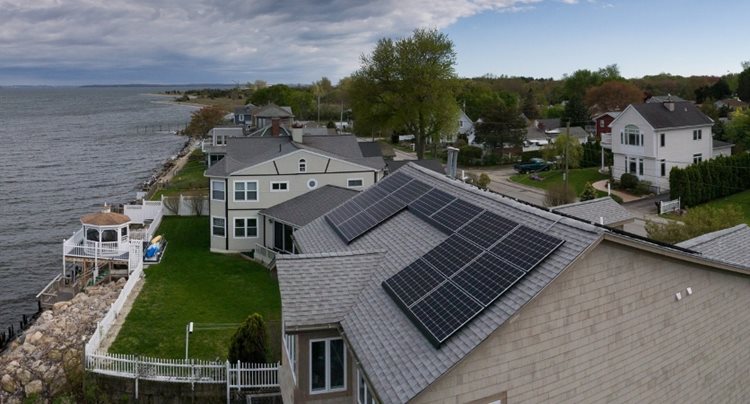
Solar panels aren’t cheap, but they’re a long-lasting way to make your home energy efficient.
(Source: Schipkeb via Pixabay)
9. Install Solar Panels.
Solar panels on homes convert light from the sun (solar energy) into electricity through a process known as the photovoltaic effect. When sunlight hits the solar panel’s cells, it excites electrons and creates an electric current. An inverter converts this direct current (DC) into usable alternating current (AC) electricity, all without putting added strain on your home’s HVAC system. These clean and renewable energy sources are quickly growing in popularity because of their natural ability to increase home energy efficiency.
While solar panels are expensive to install — averaging between $14,000 and $22,000 before federal tax incentives — they generate their own power (!) and can greatly reduce your electricity bill. Also, once installed, they last a lifetime without needing repair or replacement. That sounds like an investment worth considering, huh?
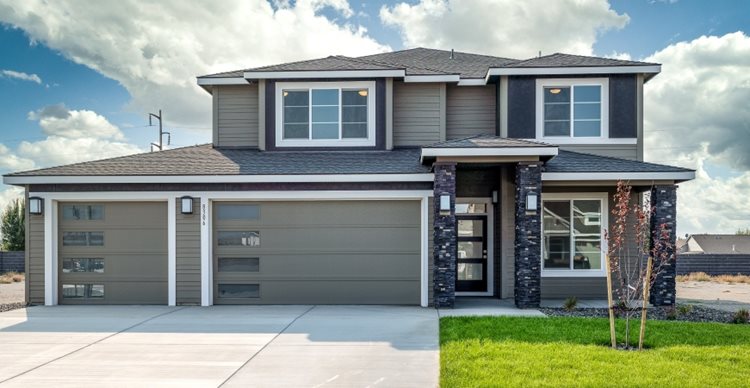
If you’re renovating, building, or buying a home, add energy-efficient appliances and upgrades to your punch list.
(Source: New Tradition Homes via Facebook)
10. Buy or Build an Energy-Efficient Home.
Ok, hear us out. We’re not advising you to sell your home and buy or build a new one just to be more energy efficient. However, if you’re already in the market for a new home, consider purchasing or planning for one that’s ENERGY STAR certified.
These homes have everything, including energy-efficient appliances — like energy-efficient air conditioning and heating units — and follow strict standards for air quality, greenhouse gas emissions, water conservation, and materials. Utility cost translation: They’re typically much cheaper to heat and cool.
If you’re choosing the renovation route instead of making a new home purchase, consider turning an energy guzzler into an eco-friendly house by taking out an energy-efficient mortgage for renovations (yes, that’s a thing). It’s important to ask about the home’s energy consumption during the purchasing process. Inquire about past utility bills, for instance, to get an idea of how much energy the home uses.
| Did you know? Energy-efficient homes are in popular demand among homebuyers. Investing in energy efficiency improvements can increase a property's resale value, making it more attractive to potential buyers and potentially leading to a quicker sale. If you’re getting ready to list your house, here are more remodeling tips for increasing your home’s value. |
Improving Your Energy Efficiency
While some of these changes are easier to make than others, the important thing is that you’re interested in finding ways to make your home more environmentally sound. Whether you’re committed to running fewer warm laundry cycles or installing new, energy-efficient windows, any action is helpful. The planet — and your wallet — will thank you.
LB Gabriel is a freelance writer who lives with her husband, daughter, and Golden Retriever in Memphis, TN. A frequent PODS Blog contributor, she's a sucker for any tip she can find on downsizing, cutting clutter, or minimalist living. When she's not on a deadline, you can find her on a tennis court or golf course.
Related Articles
Comments
Leave a Comment
Your email address will not be published. Required fields are marked *
